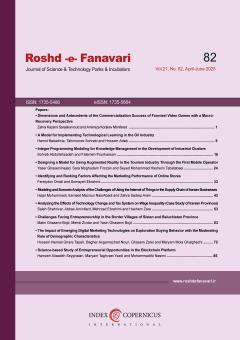Analyzing the effects of technology change and tax system on wage inequality (case study of Iranian provinces)
Subject Areas : مديريت تکنولوژيSaleh Shahrivar 1 , abbas aminifard 2 , mehrzad ebrahimi 3 , Hashem Zare 4
1 - Ph.d. student in economics, shiraz branch, Islamic azad university, shiraz, iran
2 - Assistant professor, faculty of economics, shiraz branch, Islamic azad university, shiraz, iran
3 - Assistant professor, faculty of economics, shiraz branch, Islamic azad university, shiraz, iran
4 - Assistant professor, faculty of economics, shiraz branch, Islamic azad university, shiraz, iran
Keywords: Technology, tax system, wage inequality, Iranian provinces, EGLS model.,
Abstract :
The advancement of technology and the increase in the skill level of people has led to higher wages and subsequently led to an increase in wage inequality. In this regard, tax resources are the most important tool of the government to improve this gap. This research aims to answer the question, has the tax system in Iran been effective in eliminating the wage gap, and if so, to what extent is it capable of compensating this inequality? This article examines the effect of technology change and tax system on wage inequality using the panel econometric technique of Weighted Least Squares (EGLS) during the period of 1389-1398 in 11 provinces that collect nearly 95% of the country's taxes. The estimation results show that with a one percent change in technology, wage inequality increases by nearly 16%, and in the second model with pure data (the presence of taxes), this change reaches nearly 10%. It can be concluded that the tax in Iran has an effect on reducing wage inequality and the effect of this compensation is 6%, but it has not been able to close the entire gap
